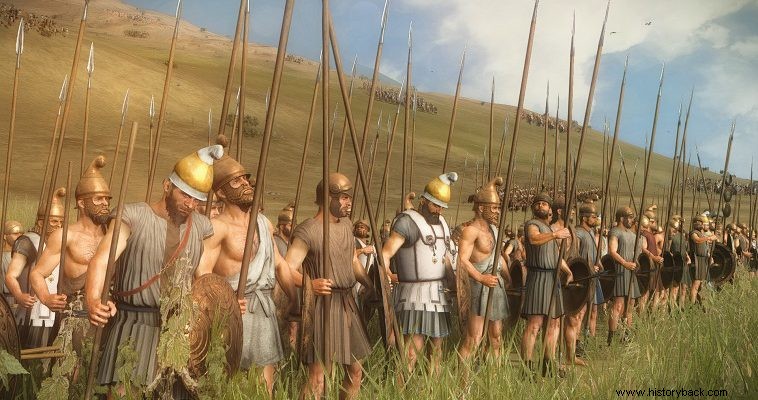
The battle at Lechaio, in 390 BC. it is a major Athenian victory, one of the few against the elite Spartans. At the same time, it is the greatest victory of the ancient peltasts against hoplites.
Corinth, the focus of a new war, was shaken by the bloody conflict between democratic and oligarchic with the latter having the support of Sparta. Nevertheless, the oligarchs were defeated and exiled.
With the support of the Spartans, however, they returned to the area and placed under their control one of the two ports of the city, that of Lechai . The oligarchs managed to fend off
Already from 395 BC. the new civil war, the so-called Corinthian . In this war, Sparta and its allies faced each other on the one hand, and Corinth, Thebes and its allies, Argos and Athens, on the other.
After the failure of the republican Corinthians, Thebans and Argives to capture Lechaium, the Athenians also sent a force to reinforce their allies. The head of the Athenian peltasts was general Iphikratis and of the hoplites Kallias.
In the meantime the Spartans had also sent forces to Corinth under the brave king Agesilaus . He managed to capture some forts and limit the maneuverability of the allies.
Agesilaos left a mora (battalion level division usually 500-600 men strong) as a garrison at Lechaio. Some of the men of the moras came from Amycles, one of the towns that formed the foundation of the Spartan state.
The men from Amyklia, according to tradition, even when they were on campaign, had to return to their city for the Hyacinthian festival . So the entire mora started from Lechaio in the direction of Sikyona, accompanying those from Amykle.
The Spartans, as mentioned by Xenophon, were all hoplites . They had no division of light infantry, only a few cavalry, as a division of support.
After escorting the men from Amykle to Sicyon, the mora turned back, returning to Lechaeum. The head of the mora did not foresee any problems and even marched near the walls of Corinth, as a demonstration.
Iphicrates is coming
The Athenian commanders who were in the city, Callias of the hoplites and Iphicrates of the peltasts, seeing the Spartan mora "parading", in fact, in front of them, decided to attack.
The Athenian hoplites came out of the city and lined up for battle while the peltasts began to pursue the Lacedaemonians, driving their javelins against them, causing them casualties . Immediately the Spartans charged forward and attacked the peltasts.
The latter, much more flexible, were easily removed. The Spartans saw the futility of the case and withdrew only to receive another attack by the Pelastians from a distance with javelins . Receiving a shower of javelins and being unable to react, the Spartans attacked again, only for the previous scene to repeat itself.
Even when a Spartan cavalry unit appeared there was no result. The reason was the obvious inexperience of the Spartan leader of the cavalry who, instead of attacking the opposing peltasts, moved cautiously against the side of the hoplites.
Constantly pressed the Spartans retreated to an adjacent hill where they were surrounded as the Athenian hoplites under Callias also approached. In the meantime the oligarchs from Lechaium saw what was happening and sent boats to free the Spartans. When the Spartans saw the boats they gave up the fight and fled trying to board them.
The peltasts pursued them killing and injuring several . Those Spartans who survived returned demoralized to Lechaeum. 250 dead were left on the battlefield . The number of injured must have been similar, but the sources do not specify.
The news of the defeat of the invincible Spartan warriors caused general astonishment throughout Greece. Agesilaus abandoned the campaign in Corinth and returned to Sparta, leaving the field free to the Athenians who exploited it accordingly, recovering three of the fortresses the Spartan king had captured.
